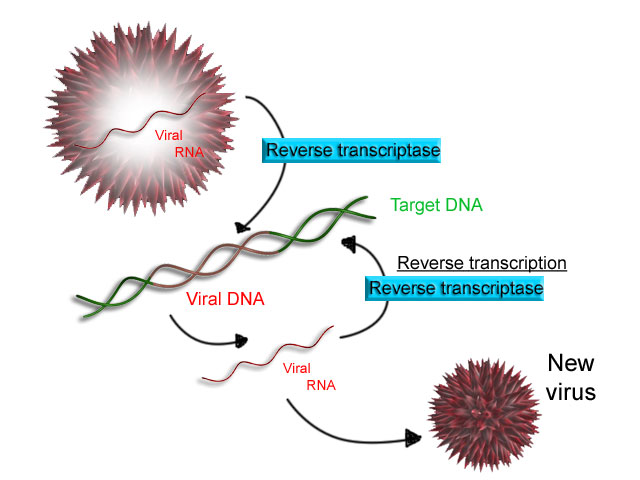We all have heard at some point the word “virus” and associated it with words like death, illness, non-living, etc. But let me tell you that in reality, this is not always the case. Have you ever considered that viruses can help us discover new cures for brain diseases?
Just recently, Johan Jakobsson, head of research team at the division for Molecular Neurogenetics at Lund University (Sweden), and his team have concluded an investigation that has been published in Cell Reports. It explains that we have acquired virus DNA through the course of evolution as a consequence of viruses’ replication cycle.
Viruses are classified into families by the Baltimore classification, in which one of the characteristics is type of replication. Let me explain how viruses incorporate their DNA into ours, but first here is a video that will help you understand the process. At the beginning, Wayne Hodgkinson explains how regular transcription works, but near the end, he mentions that certain types of viruses perform the reverse process. That is the key mechanism that some viruses use: reverse transcription.
Explaining the video in simpler words, reverse transcription consists of taking the original genetic material of the virus (RNA strand) and convert it into a “fake” DNA. I am providing a diagram that reflects reverse transcription.
In addition, I have created a simple diagram that explains how some viruses insert their DNA into ours.

Created by Leslie Almeyda Uploaded from personal computer
For long time ago scientists have been aware that viral DNA is present in our brain, but the former has been considered not useful to us; therefore, it has not had much importance. However, Jakobsson and his team have shown that viral DNA is capable of determining which and when genes are expressed in our brain cells. This is due to the virus’ DNA being integrated in the part of our DNA that controls expression of the “baby nerve cells,” which –when they have “grown up”- will become specialized nerve cells. As he says in a press release, “we believe that the role of retroviruses can contribute to explaining why brain cells in particular are so dynamic and multifaceted in their function.”
Let’s recall that there are many (lethal) diseases that are related to the brain, and unfortunately some of them are still untreatable. Now with the discovery that part of our brain is affected by viral DNA, scientists can look deeper into our brain cells and link our genes expression to viral DNA insertion. In Jakobsson’s words, “I believe that this can lead to new, exciting studies on the diseases of the brain. Currently, when we look for genetic factors linked to various diseases, we usually look for the genes we are familiar with. […] Now we are opening up the possibility of looking at a much larger part of the genetic material which was previously considered unimportant.”
In conclusion, we have observed that some viruses are indeed helpful to us and might even lead us to newer and more efficient treatments to cure a variety of diseases. Thank you viruses!
-Leslie Almeyda-

